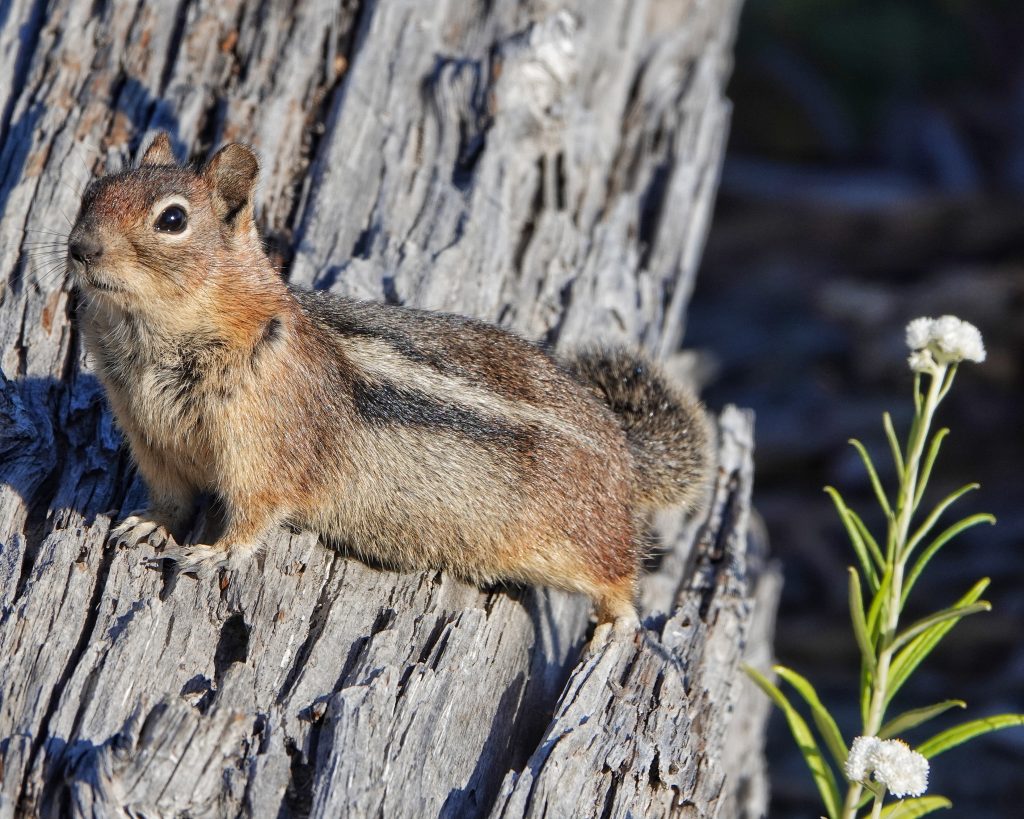
Back in July when I made a trip to Mt. St. Helens National Monument in Skamania County, Washington, I spotted what could’ve only been a Cascade Golden-mantled Ground Squirrel. The reason I say it had to be a Cascade was because I saw the lack of stripes on the face (ruling out all chipmunks), I saw that it had a lateral stripe (ruling out all but one ground squirrel), and the Golden-mantled Ground Squirrel is not found in the Washington Cascades. But the photos I got were not satisfactory.
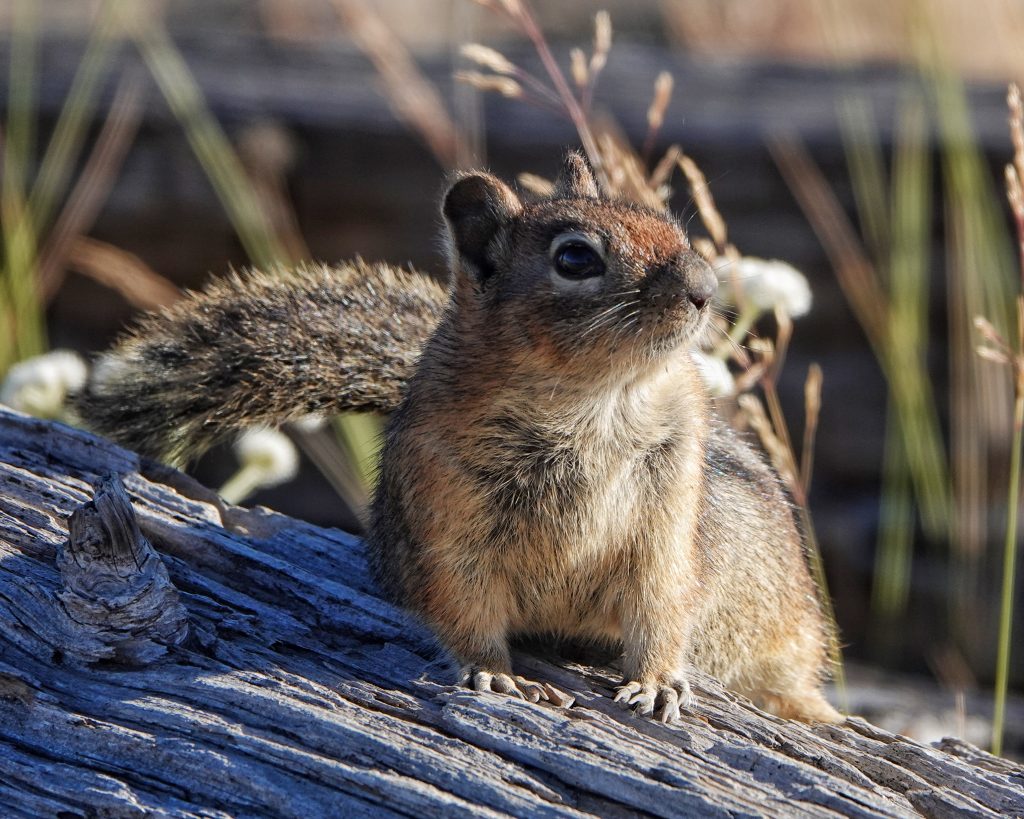
Last Sunday Pam and I made a trip to the Silver Lake area so that she could visit some old friends, and I suggested that we pack some food and make the 45 minute drive up to the Loowit Viewpoint in the Monument afterwards, and have a picnic, with, of course, the ulterior motive of seeing a Cascade Golden-Mantled Ground Squirrel. She said she wasn’t sure how she’d feel about adding a couple hours driving time to the days events, but agreed that we should take extra food. Fair enough . Since I am not the ‘visiting’ type, I left to explore the area soon after her friends gave us ‘the tour’ of their new place. When I returned to pick up Pam nearly 6 hours later I was sure she wouldn’t be in the mood for extending the road trip, for which I couldn’t blame her, and I’d made peace with not finding a Cascade Golden Mantled Ground Squirrel this year, in part because I had read that many, if not most, of them go into hibernation in late August. But she surprised me by saying that a drive into the mountains actually seemed very nice, so we headed east. Up at Loowit Viewpoint we had a lovely picnic, with a spectacular view into the lava dome.
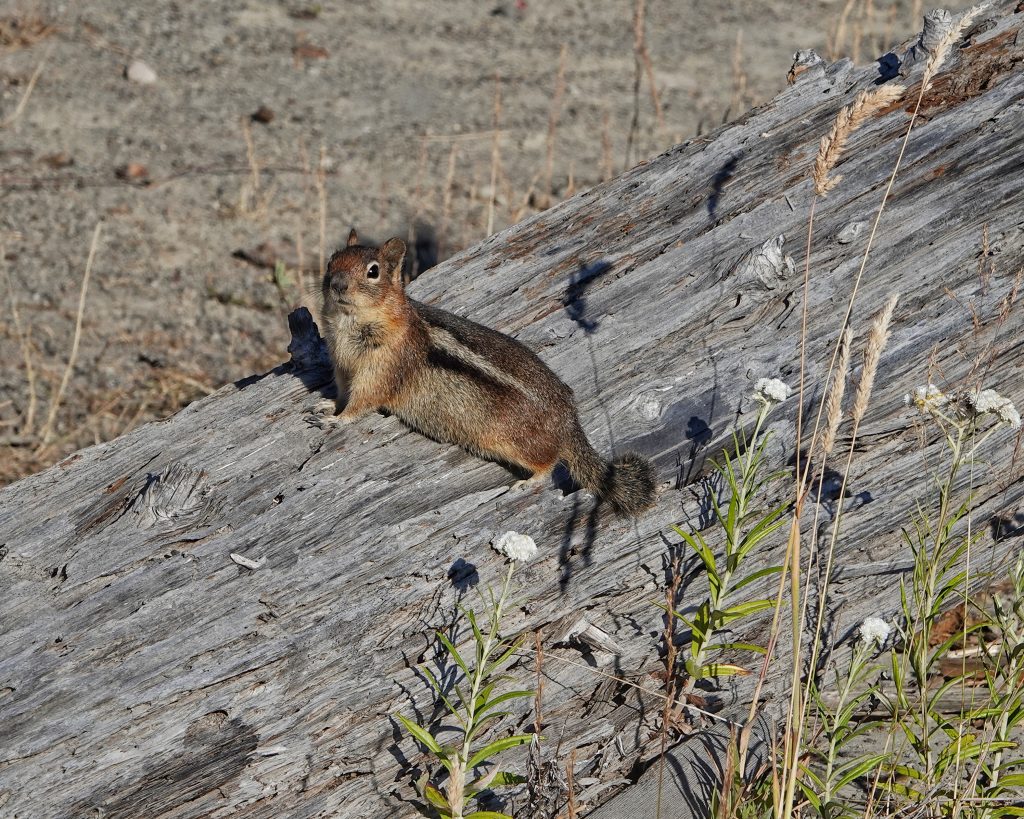
As soon as I’d finished eating I grabbed my camera and wandered off in search of cooperative wildlife. And almost immediately I saw a beautiful little Cascade Golden Mantled Ground Squirrel perched atop a log (almost certainly from a tree blown down during the eruption 42 years ago)! It didn’t exhibit any begging behavior, but it also didn’t seem to have any particular fear of me. It allowed me to walk around and get photos from several different angles, before finally diving off the far side of the log. Only to reappear a few seconds later on a different, smaller log. I finally realized that I had plenty of photographs, and put down the camera and simply watched this elegant creature go about its life for several minutes. Then, choosing to end the day on this high point, I retreated to the car and the two hour drive home.
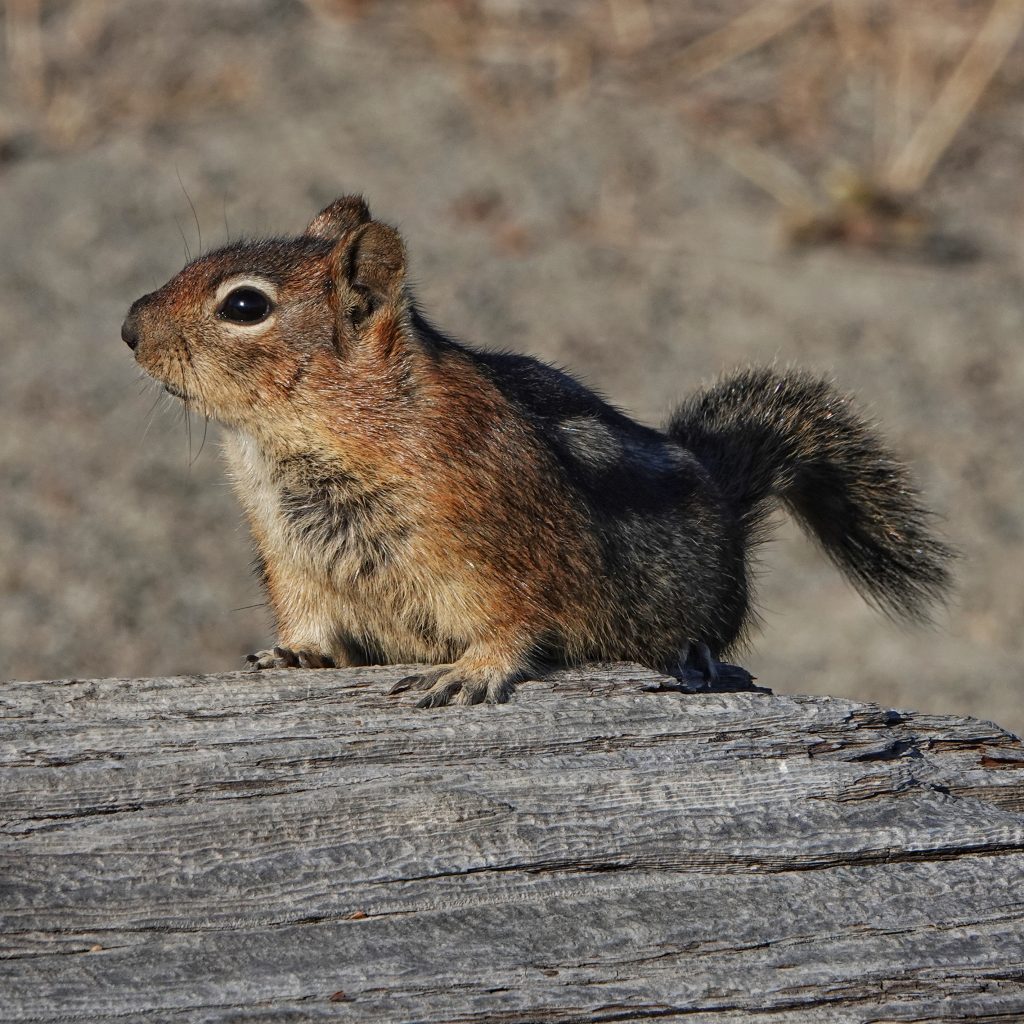
Though some small mammals seemed to survive the eruption in the blast zone (notably deer mice), the Callospermophilus saturatus at Loowit Viewpoint, which is only 5 miles from the center of the eruption, almost undoubtedly did not. Though they do live in burrows, they are diurnal creatures (unlike the nocturnal deer mice) and would’ve been out foraging or trying to find a mate when the eruption occurred. There may have been survivors in pockets of protected habitat within the blowdown area, but they were not observed there until 1983. However, by 1986 they were recolonizing areas within the immediate blast zone (Crisafulli et al.; 2005), which is quite a feat for an animal with such short legs and a home range usually measured in hundreds of square meters.
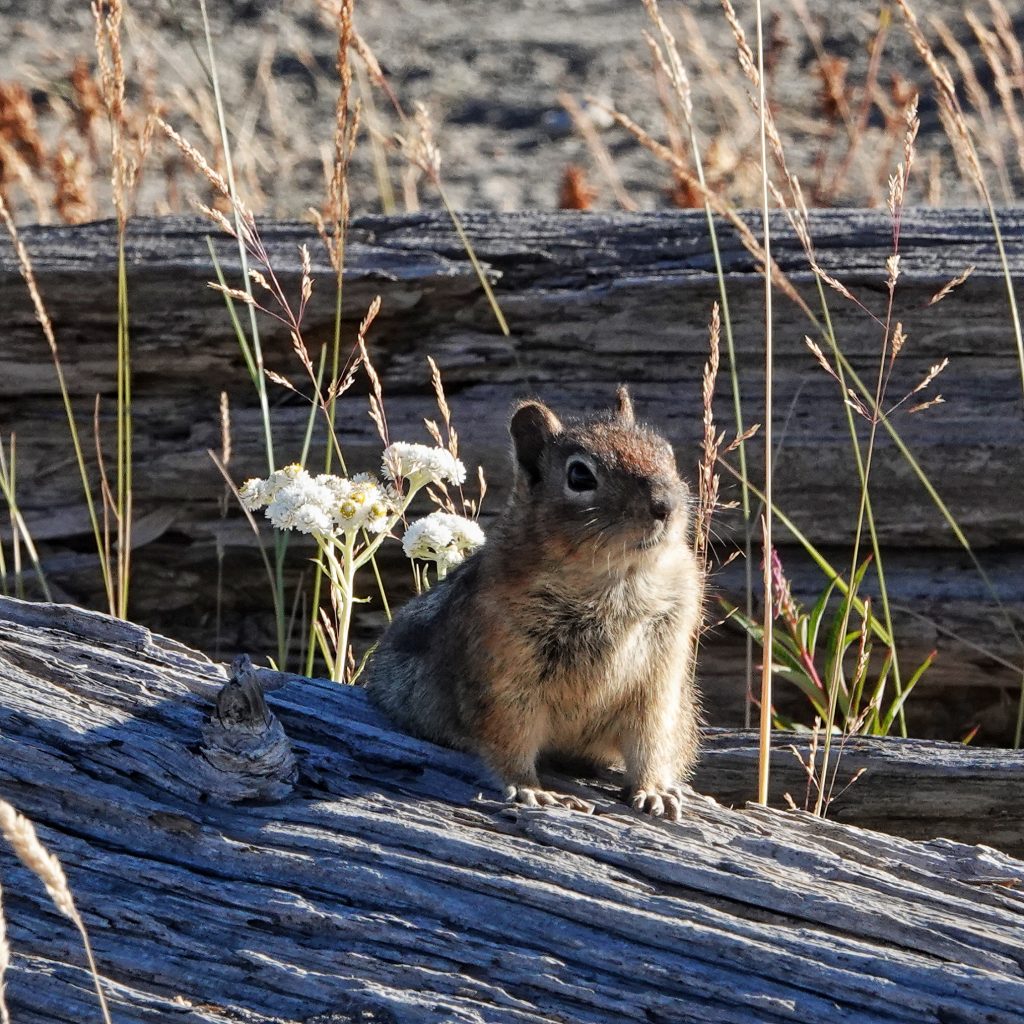
The sly males of this species enter hibernation later than the females, which is somewhat unusual for ground squirrels. Usually males, without the energy and lactation demands of infants, are able to generate sufficient fat far faster than females, and thus begin hibernating earlier. However, it appears that male Callospermophilus saturatus remain active for longer so as to observe the denning sites of females, so they know what neighborhoods to defend, and giving them the home addresses for prospective mates in the spring. However this does frequently backfire, because they are then more obvious to predators in the desiccating and deciduous landscape.
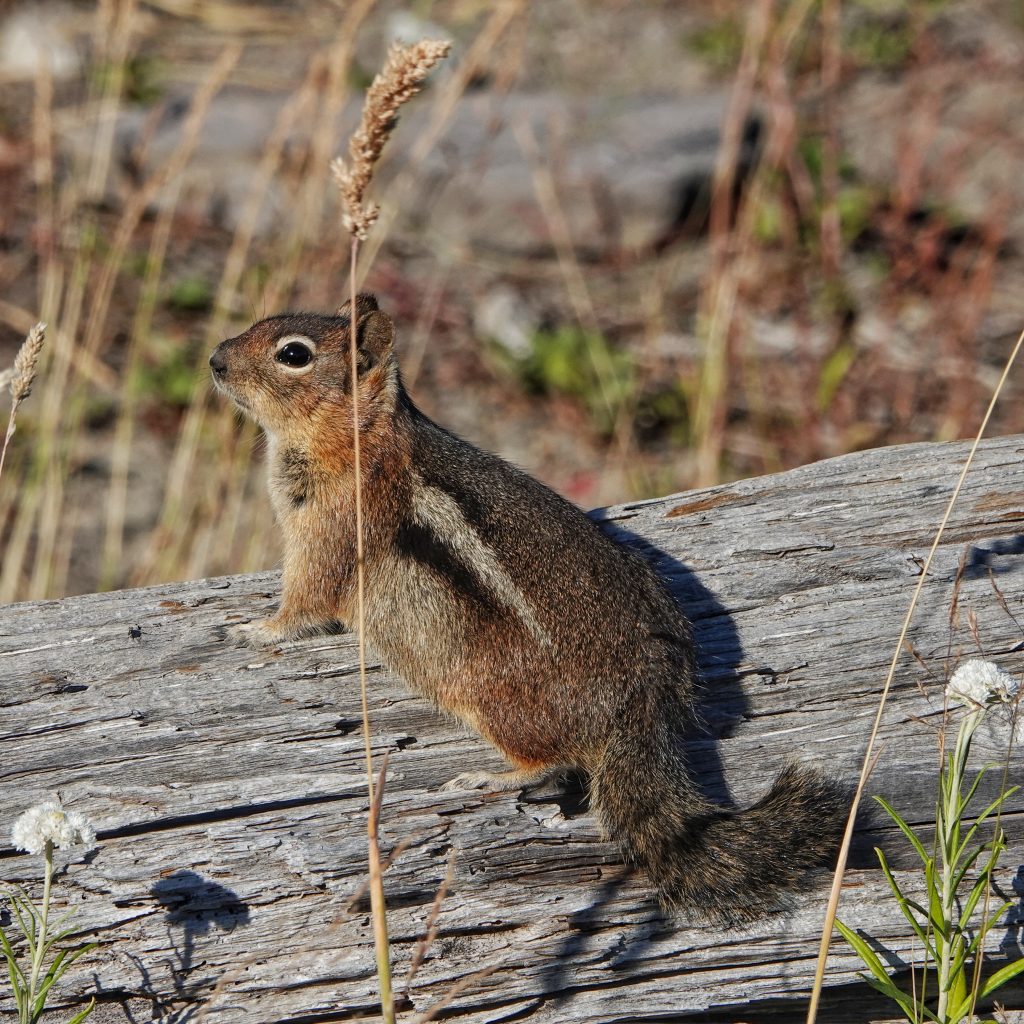
Description-Medium sized (10-13” body length, plus 3.5-5” tail) ground squirrel that is chestnut brown overall, with a white to cream lateral stripe that is bordered by darker brown to black stripes, the top one of which is not as long as the pale stripe; head and face are unmarked.
Similar species–Golden Mantled Ground Squirrels are lighter overall, with black stripes both as long as the white stripe they border, and are not found in the Washington Cascades; other ground squirrels lack lateral stripes; all chipmunks have striped facial markings.
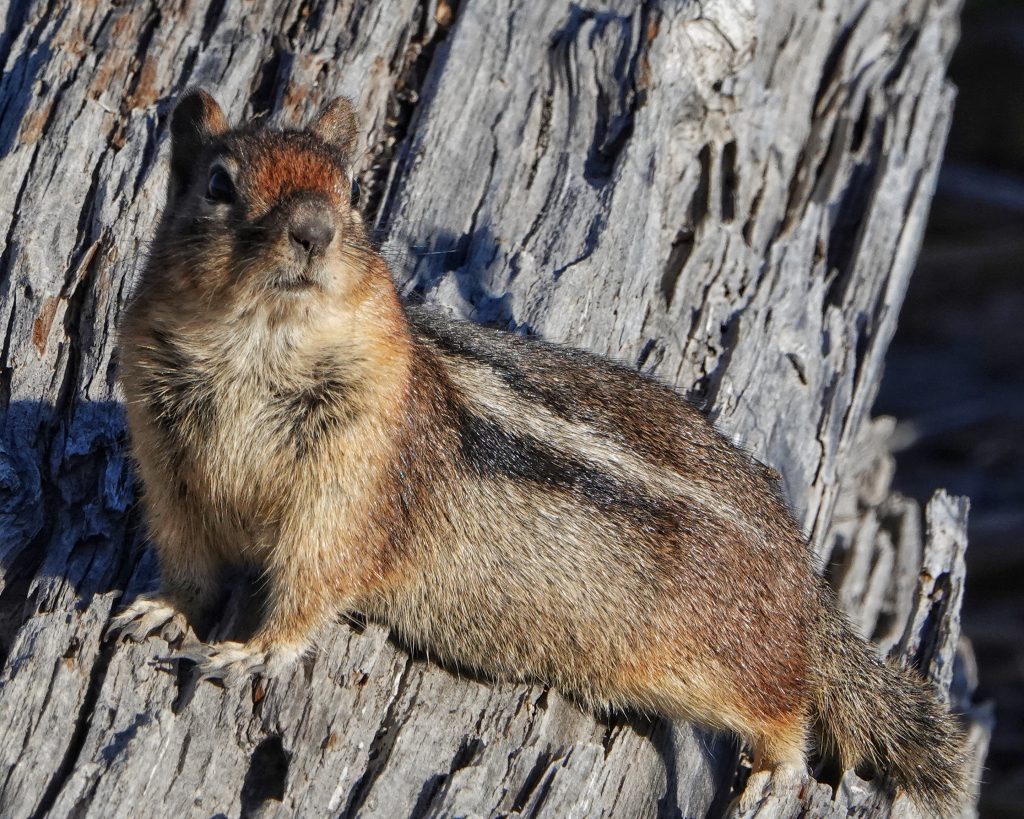
Habitat-Subalpine to alpine rocky slopes, meadows, and mixed coniferous forests; most common where pines are a part of the mixed forest; also found in open Ponderosa pine/grass/sagebrush areas in the eastern Cascades.
Range-Only found in the Cascades of Washington state and s BC.

Eats-Hypogeous fungi (mushrooms), leaves, flowers, and seeds of legumes (family Fabaceae), bark, conifer seeds, grasses, and the fruit of Vaccinium sp. (huckleberries, etc), salal, and Sorbus sp. (mountain ash); also known to eat carrion, even of conspecifics.
Eaten by-Owls, hawks, eagles, bobcats, coyotes, foxes, marten, fishers etc; basically any carnivore which can catch them; bears are known to try to dig hibernators out of their burrow.
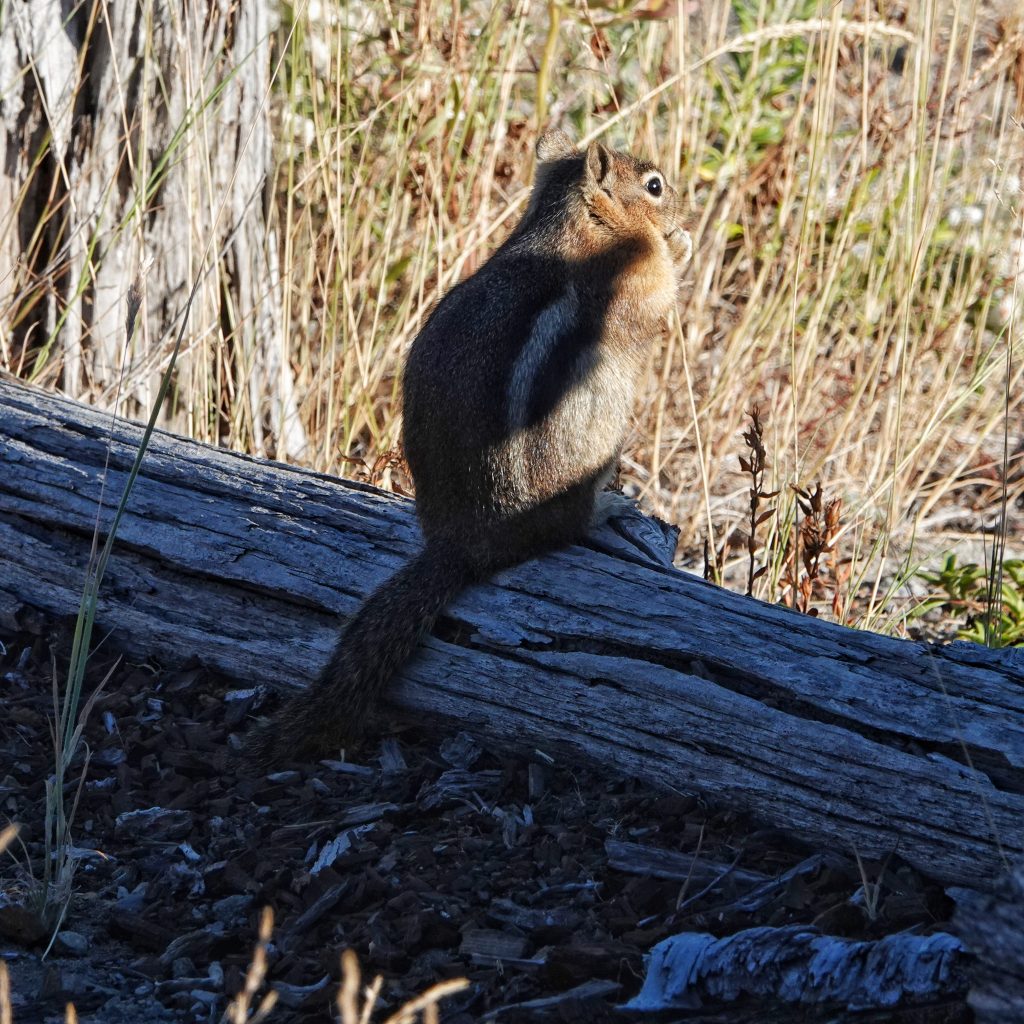
Life cycle-Males attempt to mate with as many females as possible, but once a female has been bred she is no longer receptive; mating begins as soon as the females emerge from hibernation; gestation lasts 28 days, and females give birth to 3-5 blind, hairless pups; young emerge from the burrow in about 5 weeks, and are weaned about a week later; females guard and teach their young for up to several weeks after weaning; males offer no parental care at all; reach sexual maturity the following spring, although only about 10% of yearling males and 50% of yearling females breed successfully; known to live up to four years in the wild, but may live longer than that.
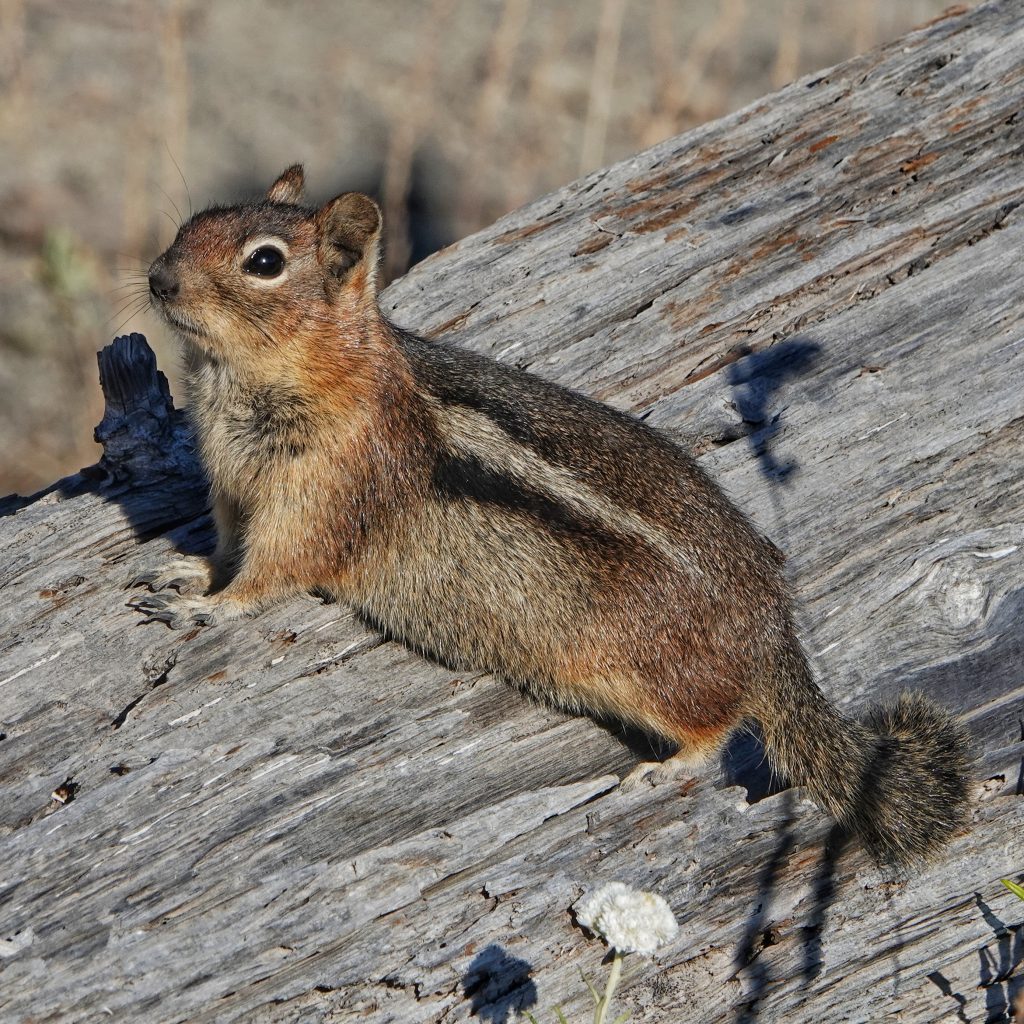
Adults active-From snowmelt (usually late March to early May) into September; males usually emerge about 2 weeks before females.
Etymology of names–Callospermophilus translates roughly from Latin as ‘lover of tough skinned seeds’, a reference to this genus’ preference for seeds of manzanita and pines. The specific epithet saturatus is from that Latin word for ‘filled’, but I’m not sure what exactly is saturated.

ADW: Spermophilus saturatus: INFORMATION
https://academic.oup.com/jmammal/article/90/2/270/894719
Small Mammal Recolonization on the Mount St. Helens Volcano: 1980-1987 on JSTOR
The Effects of Catastrophic Ecosystem Disturbance: The Residual Mammals at Mount St. Helens on JSTOR
http://greglasley.com/content/Mammals/CascadeGolden-mantledGroundSquirrel.php
Sorbus sitchensis (Western Mountain Ash) – 10,000 Things of the Pacific Northwest
Gaultheria shallon (Salal) – 10,000 Things of the Pacific Northwest
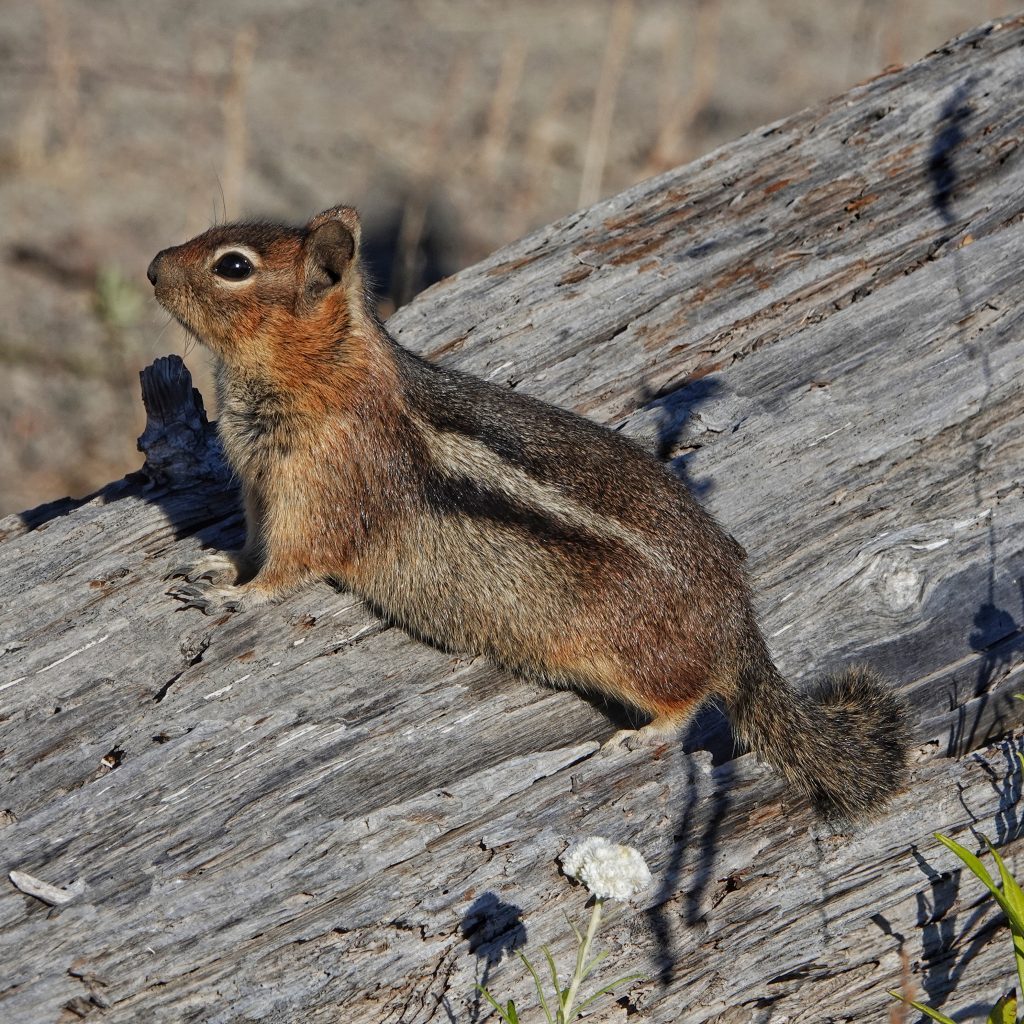
What a great story, I’m glad you found this little guy! I’ve never seen a ground squirrel and it’s helpful to know about the face stripe field marks differentiating them from chipmunks. From the photos it also looks like ground squirrels have a different posture than chipmunks – much lower to the ground.
Thanks, Lynn!